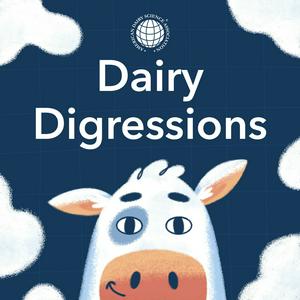Latest Updates on HPAI H5N1 and Dairy—What We Know Today About Bird Flu Viral Dynamics and Pathways with Diego Diel, DVM, PhD
Since our last episode devoted to the highly pathogenic avian influenza (HPAI) H5N1 outbreak in US dairy herds, the virus has passed some concerning new milestones—infecting over 900 herds, more than 60 people (including 1 death), and millions of domestic poultry flocks—and continues to present a pressing concern to dairy scientists and the dairy sector as a whole. To help our listeners keep their finger on the latest science, Matt sits down withDiego Diel, DVM, MS, PhD, a leading virologist and associate professor in the Department of Population Medicine and Diagnostic Sciences at Cornell University’s College of Veterinary Medicine. Diego and his lab team at Cornell were on the testing frontlines during the COVID-19 outbreak and are once again leading the charge in studying, documenting, and understanding H5N1—including via three impactful recent publications inJDS Communications andNature. He and Matt unpack the complexities of the H5N1 virus, explaining its unique components and genetic lineage, how it affects different cells across species, and tracking its evolution from wild birds to spreading in dairy cattle and spillovers to other avian and mammal hosts. The two discuss Diego’s recent work experimentally infecting dairy cows and calves to better understand the dynamics of the virus, detailing how it impacts the mammary gland, leading to severe mastitis and surprisingly high viral loads in milk. They review some of the remaining unknowns of the outbreak: Why haven’t we seen H5N1 in beef cattle? How is the virus spreading regionally from farm to farm? What is theexactroute of infection for dairy cows? Will vaccines be needed to stop its spread? The duo also cautiously explores the pandemic potential from the outbreak, outlining the current presentation of the virus in humans and clarifying that there is currently no human-to-human transmission. Thankfully, we have tools—such as antivirals that are effective against influenza in humans—in the toolbox to fight a pandemic if the virus were to mutate. While reassuring listeners that current data suggest a low risk, Diego emphasizes the importance of continued surveillance, testing, preventive measures, and research to understand how H5N1 might evolve.This episode ofDairy Digressions is a must-listen for anyone in the dairy sector seeking a comprehensive understanding of what we know today about the H5N1 outbreak. Episode Twenty-Four Show NotesLearn more aboutDiego Diel and connect with him onLinkedIn andX/Twitter. Start earning rewards and journal savings via the ADSA Loyalty Rewards Program for the Journal of Dairy Science and JDS Communications.Are you interested in participating in ADSA’s next AnnualMeeting?Submit your abstract beforeFebruary 12, 2025, andjoin us in Louisville, Kentucky, this June!Catch up on the papers, news articles, and podcasts discussed in the episode:Hot topic: Influenza A H5N1 virus exhibits a broad host range, including dairy cows,JDS Communications(2024)Spillover of highly pathogenic avian influenza H5N1 virus to dairy cattle,Nature(2024)H5N1 clade 2.3.4.4b dynamics in experimentally infected calves and cows,Nature(2025)The global H5N1 influenza panzootic in mammals,Nature (2025)Why hasn’t the bird flu pandemic started?,Science(2024)First bird flu death in U.S. reported in Louisiana,New York Times(2025)Update: Bird flu in the United States, Infectious Diseases Society of America (2025)Transmission of a human isolate of clade 2.3.4.4b A(H5N1) virus in ferrets,Nature(2024)A human isolate of bovine H5N1 is transmissible and lethal in animal models,Nature(2024)A single mutation in bovine influenza H5N1 hemagglutinin switches specificity to human receptors,Science (2024)Genetic tracing of market wildlife and viruses at the epicenter of the COVID 19 pandemic,Cell(2024)
